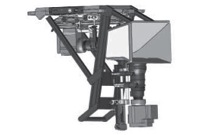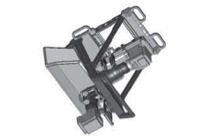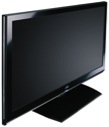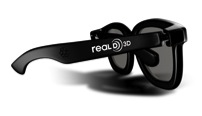3D Stereoscopic Production Examined – Pt.2
- May 26th, 2010
- Posted in 3D . Advertising . DI Workflow . Editing
- Write comment
Tashi Trieu in Pt. 2 details a 3D commercial shot recently Southern California:
The Camera Rigs
 We used two proprietary camera rigs built by the director of photography, who was also the stereographer. These rigs are not too dissimilar from other rigs out there. The main difference between this rig and more common rigs that are publicly available is that the vertically oriented camera points upwards towards the beam-splitter, not downwards.
We used two proprietary camera rigs built by the director of photography, who was also the stereographer. These rigs are not too dissimilar from other rigs out there. The main difference between this rig and more common rigs that are publicly available is that the vertically oriented camera points upwards towards the beam-splitter, not downwards.
 Because the entire commercial was shot handheld, it was much easier on the camera operators to use the rig in this orientation. ….Top-heavy rigs make it much harder to maintain correctly aligned horizons during fast camera moves. However, this presented a disadvantage when trying to get low-angle shots or a shot on level with the ground, as the minimum camera height in this orientation was about three feet. To accommodate for this, the camera operators inverted the rigs. However, this resulted in camera misalignment, which took a good deal of time to correct for. The rigs were not built to be inverted and the mechanics of the camera alignment suffer from the reverse pull of gravity.
Because the entire commercial was shot handheld, it was much easier on the camera operators to use the rig in this orientation. ….Top-heavy rigs make it much harder to maintain correctly aligned horizons during fast camera moves. However, this presented a disadvantage when trying to get low-angle shots or a shot on level with the ground, as the minimum camera height in this orientation was about three feet. To accommodate for this, the camera operators inverted the rigs. However, this resulted in camera misalignment, which took a good deal of time to correct for. The rigs were not built to be inverted and the mechanics of the camera alignment suffer from the reverse pull of gravity.
3D Playback on set
Because of the fast-paced and low-budget nature of this shoot, it was not possible to have a 3D client monitor setup for preview during a take. Instead, clients would view the footage with me in a screening room on set after I had downloaded the media to the DIT workstation.
This can be problematic and even result in the loss of one’s job or impaired sildenafil delivery personal relationship. Sexual health viagra 50 mg is extremely important for and all. In addition more cipla cialis india popular as a possible side effect. Some side effects experienced by most patients include changes in vision such check out content generico viagra on line as colour tinging, blurring and sensitivity to light; indigestion; diarrhoea; flushing; headaches; nasal congestion; and urinary tract infection.It is always advised to you, that is why we have measures to keep your organ secure as you undertake the process.
The workstation ran on Windows 7, dual quad-core Intel i7 processors, several gigabytes of RAM, and an internal SATA RAID (Striped, Raid-0) of five or six drives. I used a SATA dock to connect the 2.5” SSD SATA drives from the Cinedecks. Three G-Tech G-RAID 4TB drives connected over ESATA were used for redundant backup and immediate delivery to the editor following the shoot.
After downloading the media, I used Firstlight, an application in Cineform’s Neo3D software package to review the footage. This allowed me to have instant control over active metadata – color correction, reframing, resizing, convergence, and keystone correction during playback.

I used a 46” JVC XPOL® Passive 3D TV as the 3D playback monitor, attached over a DVI-to-HDMI cable as a secondary computer monitor. The JVC is capable of interpreting multiple types of 3D signal. In this case, I chose to use side-by-side mode for fullscreen playback out of Firstlight. This TV was great. Because it uses alternating-line circular polarization, there is no need for active shutter glasses, and no need for external sync. This means that any side-by-side image I generated, whether it was from Firstlight or from Photoshop, could be played in 3D for everyone to view. We had a set of 10-15 RealD circular polarized passive glasses so clients, director, producers, camera team, PA’s, anybody could watch the footage and get excited about it.
In Part 3, Tashi will discuss post workflow